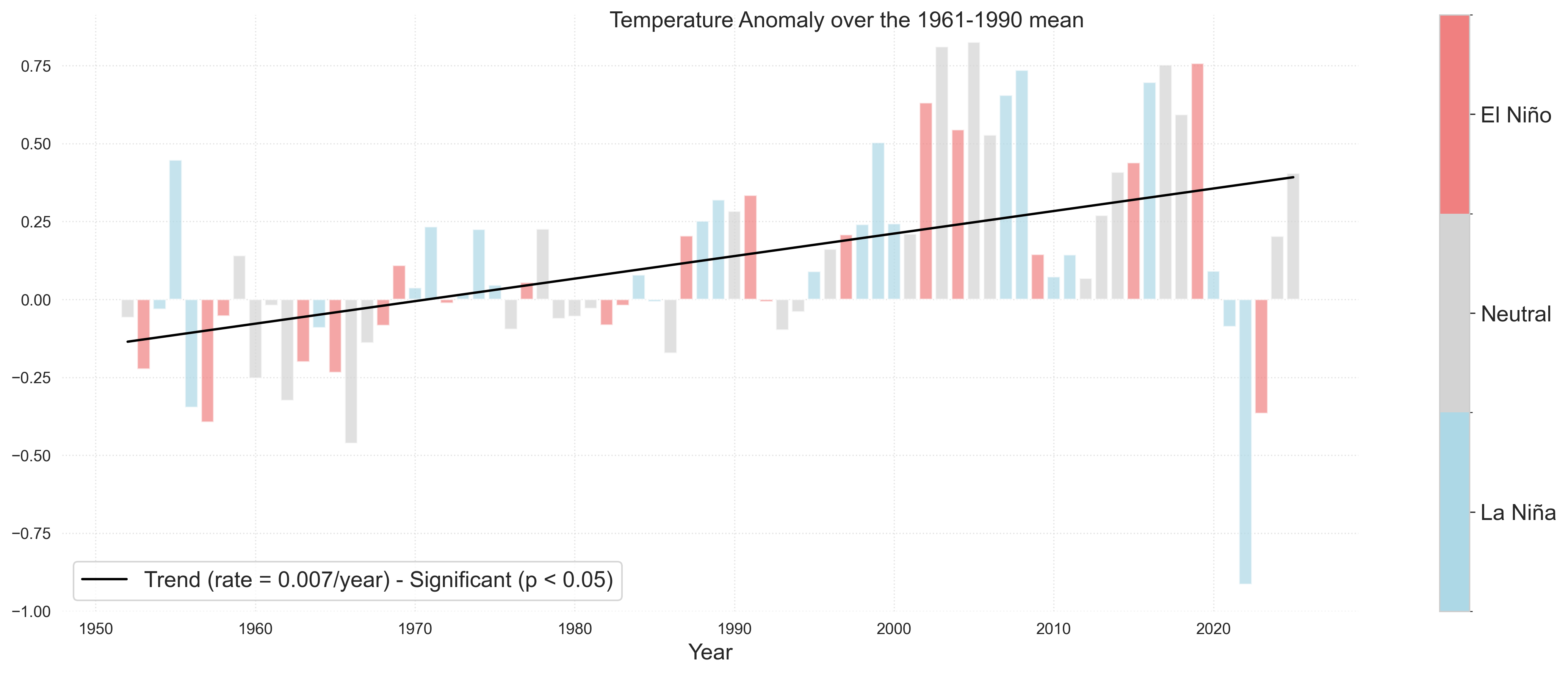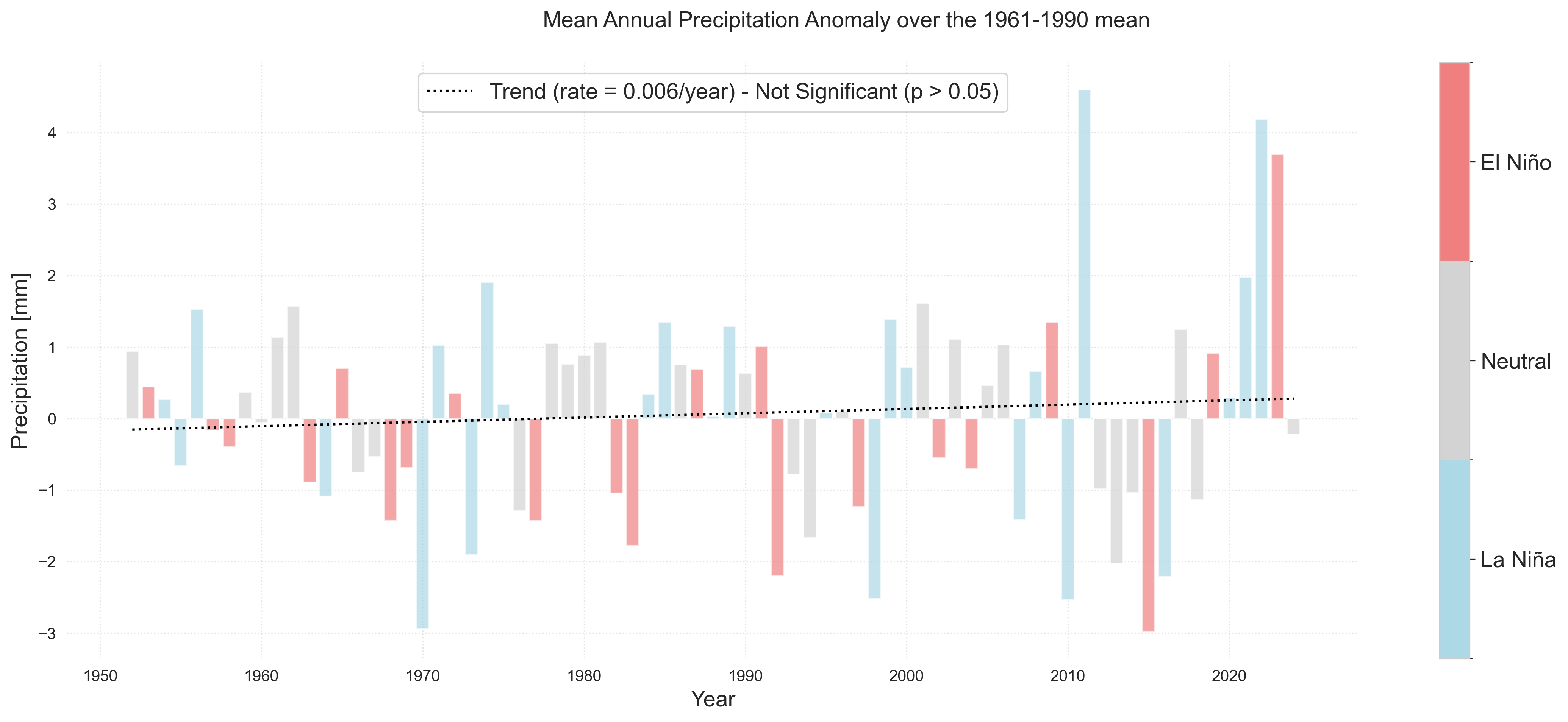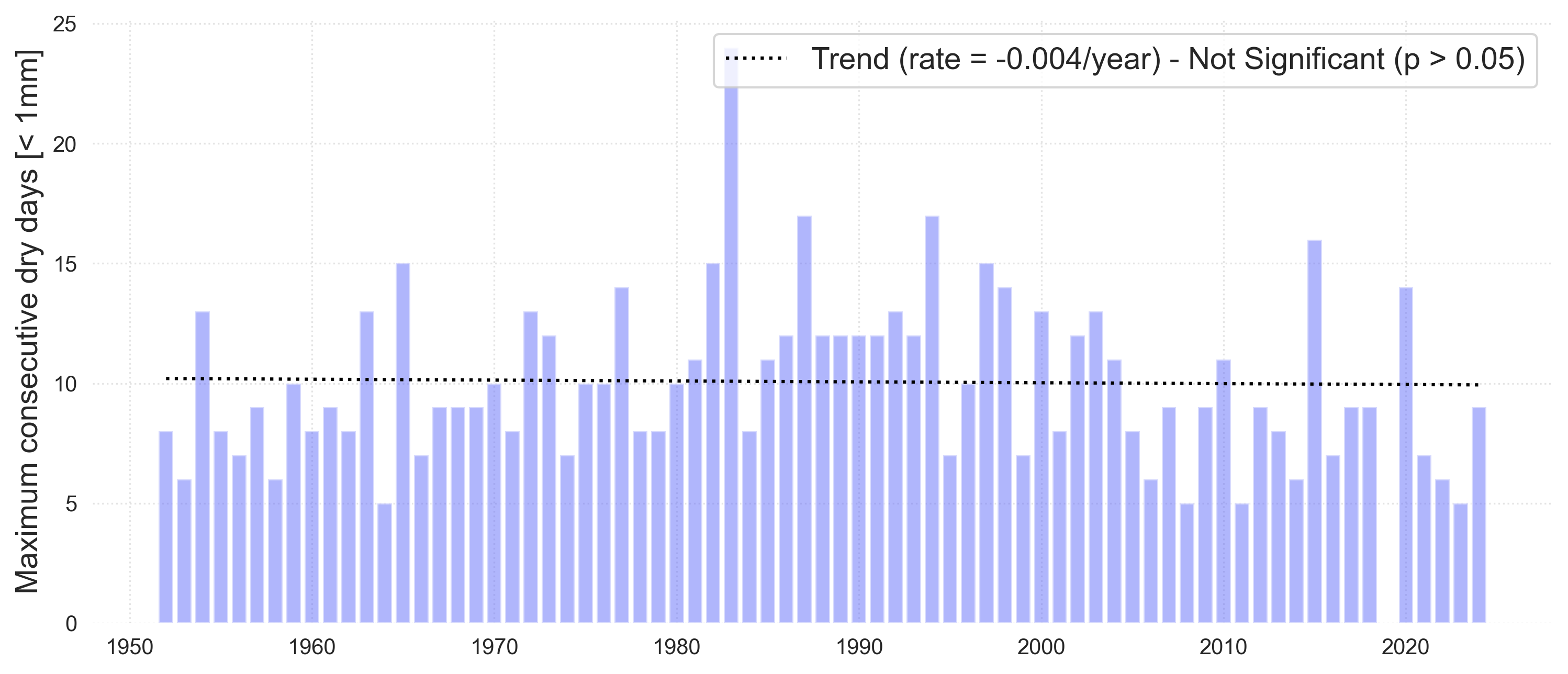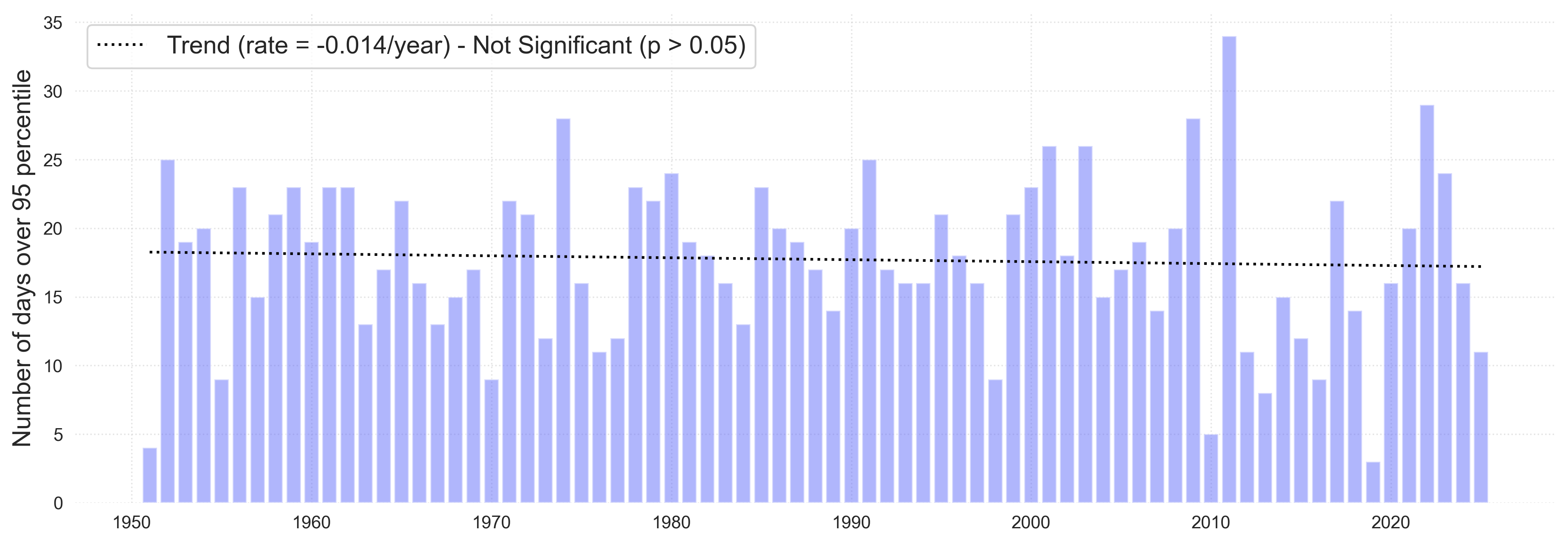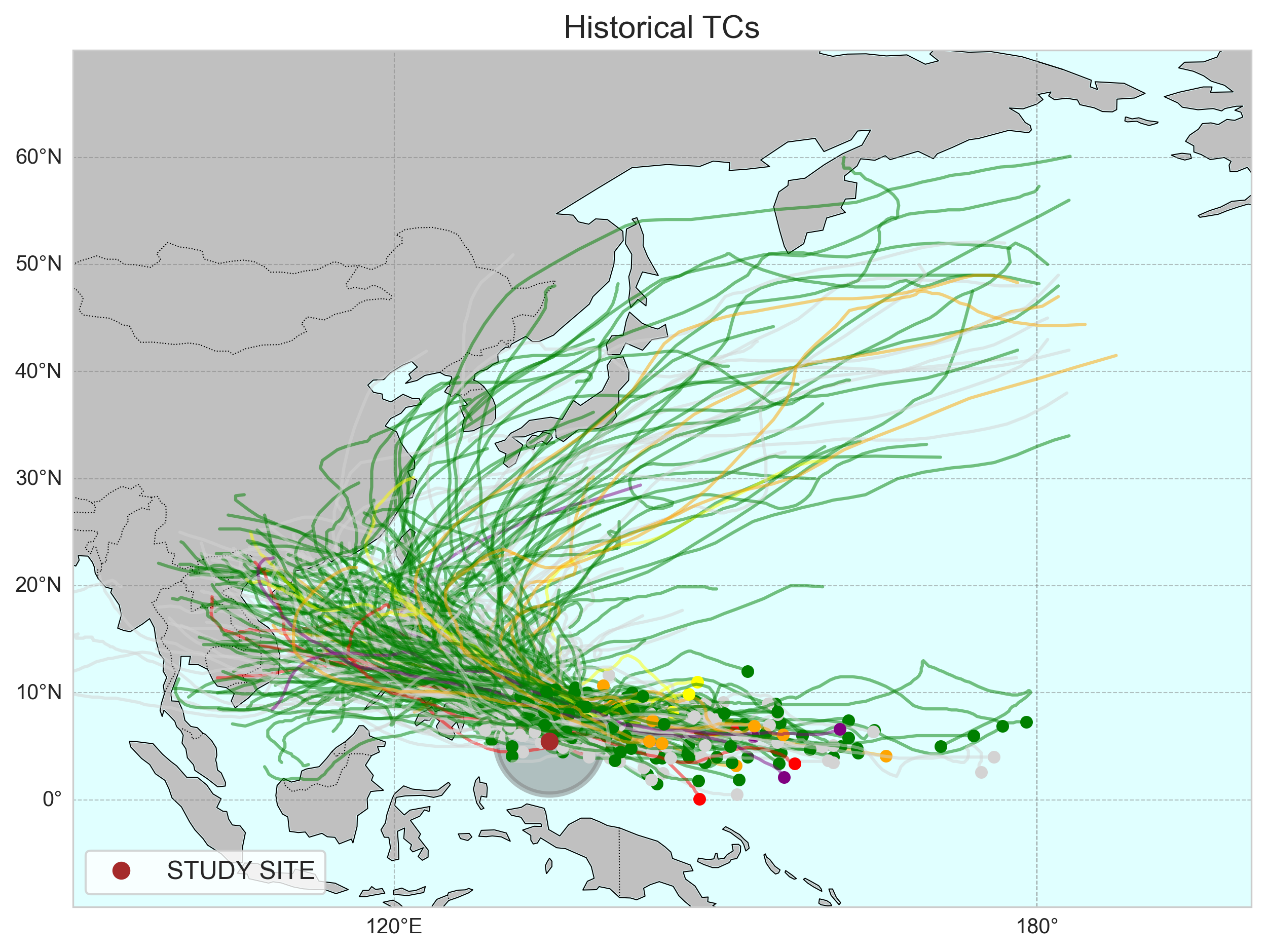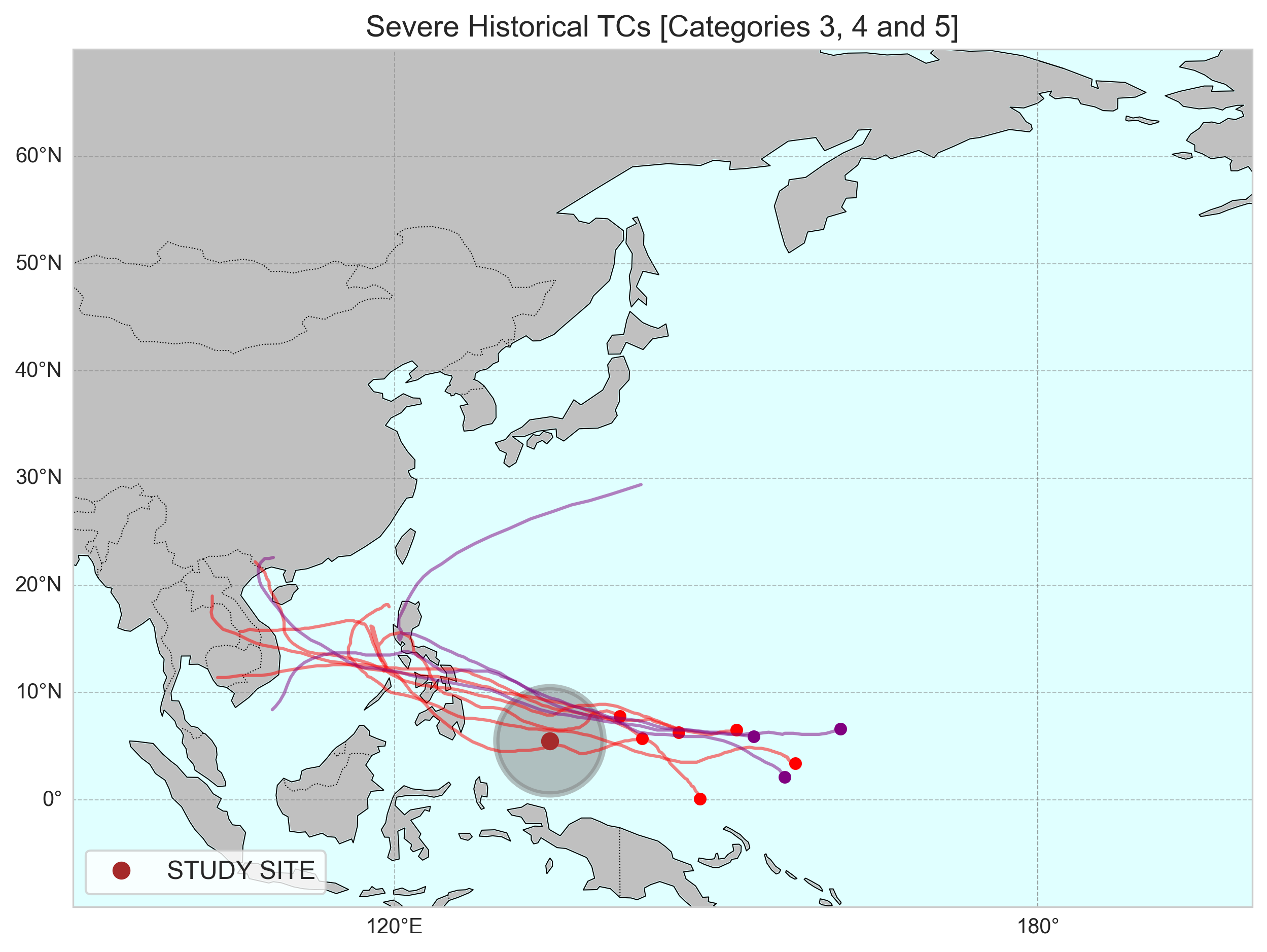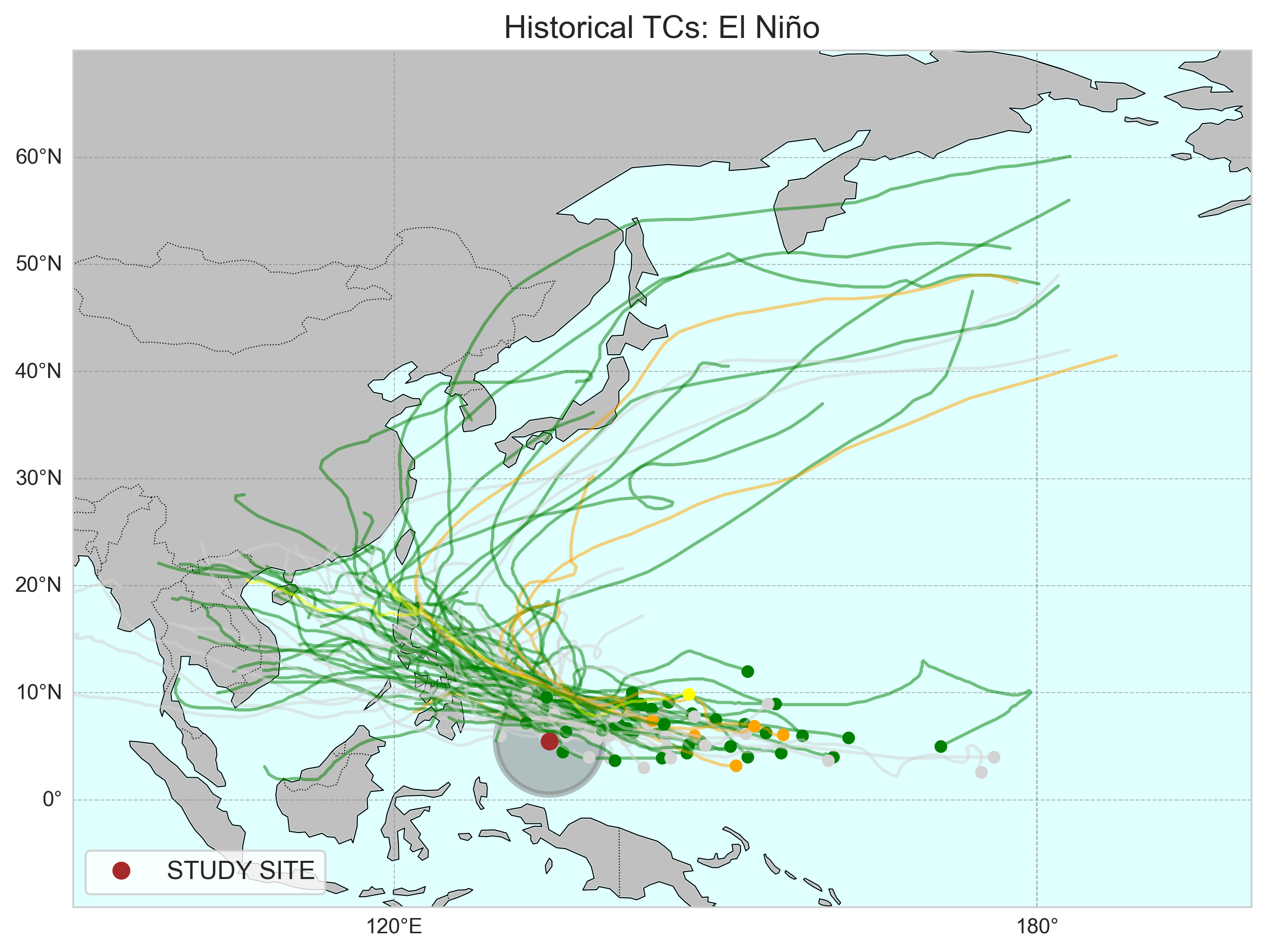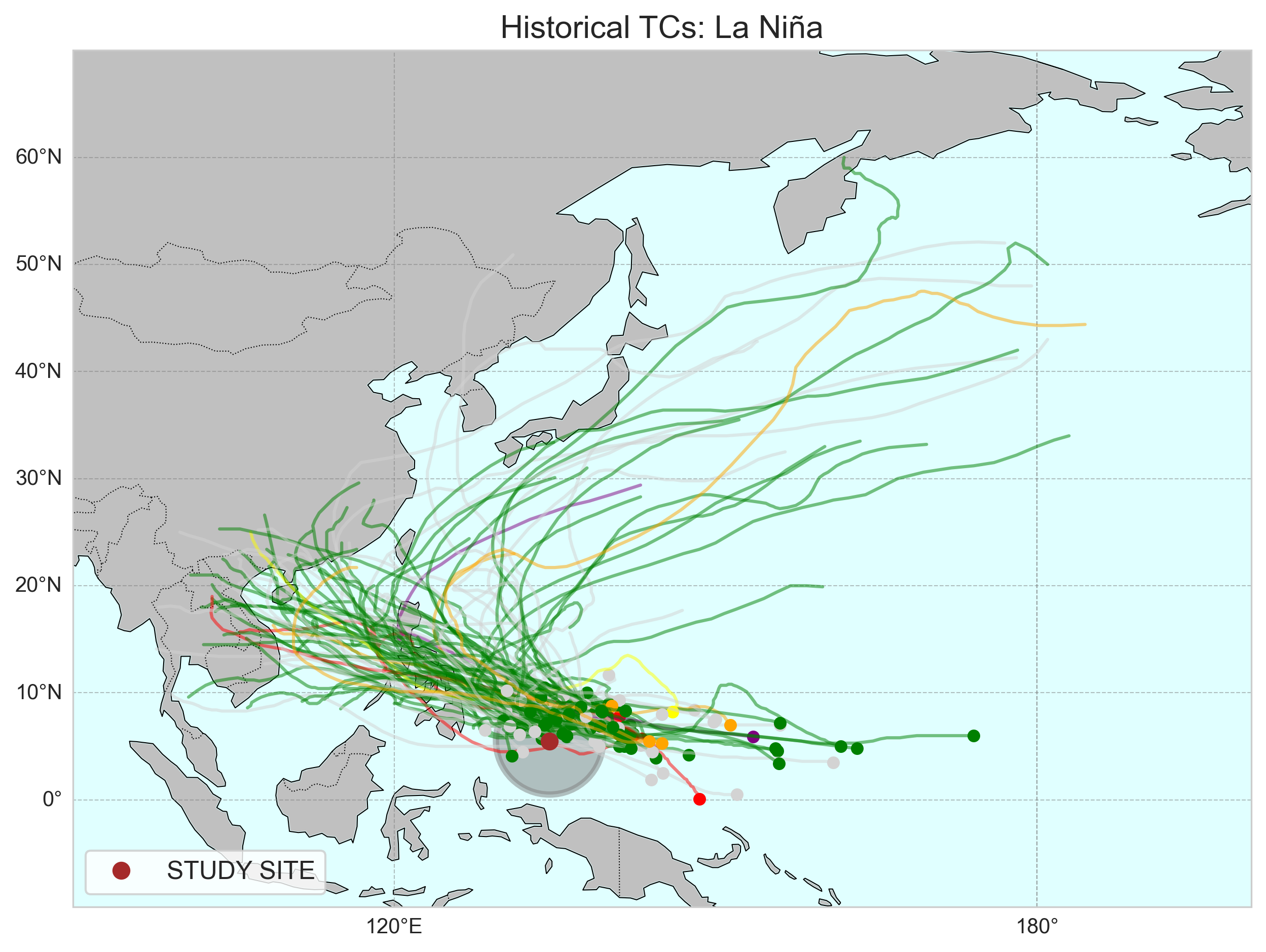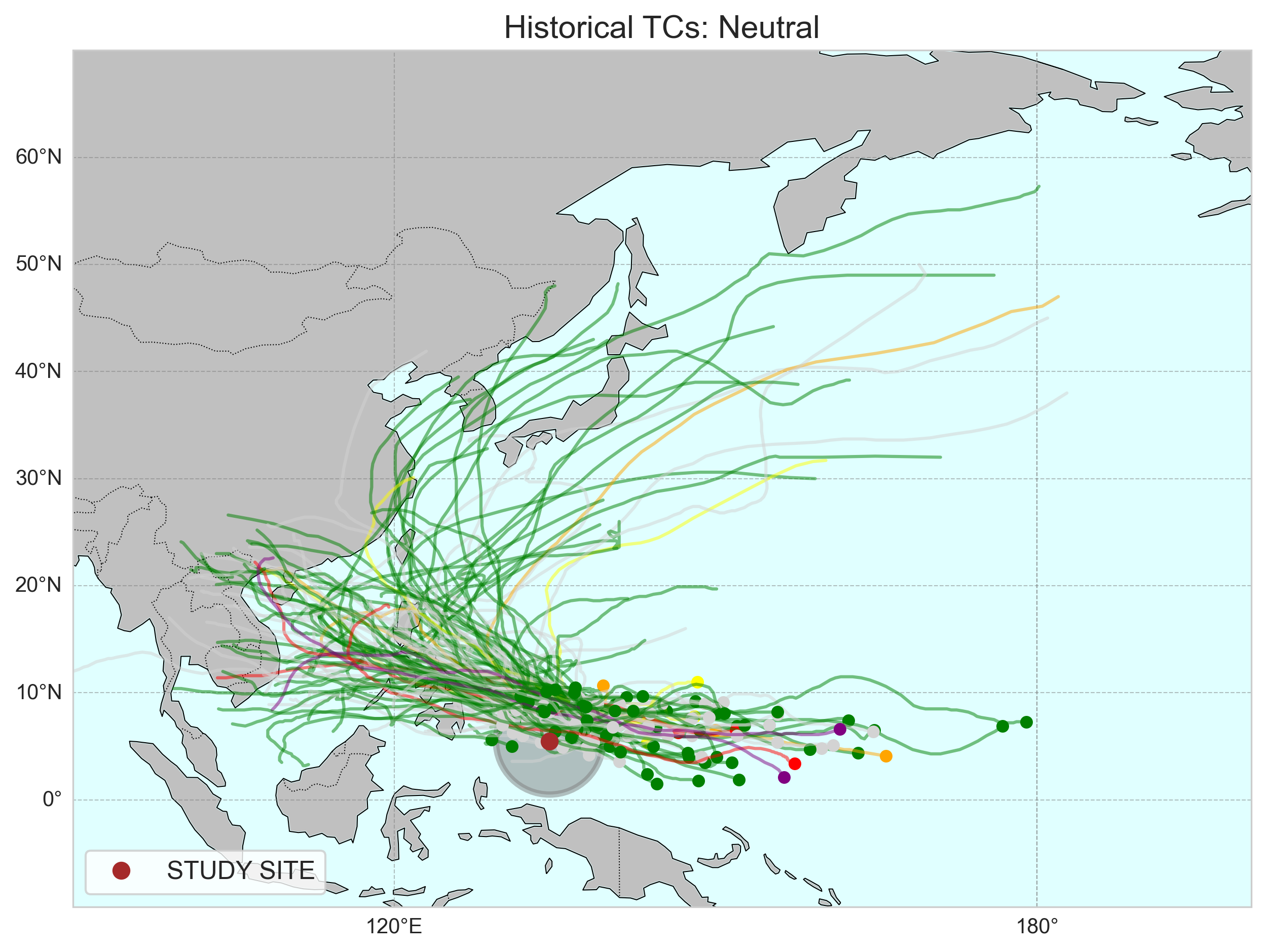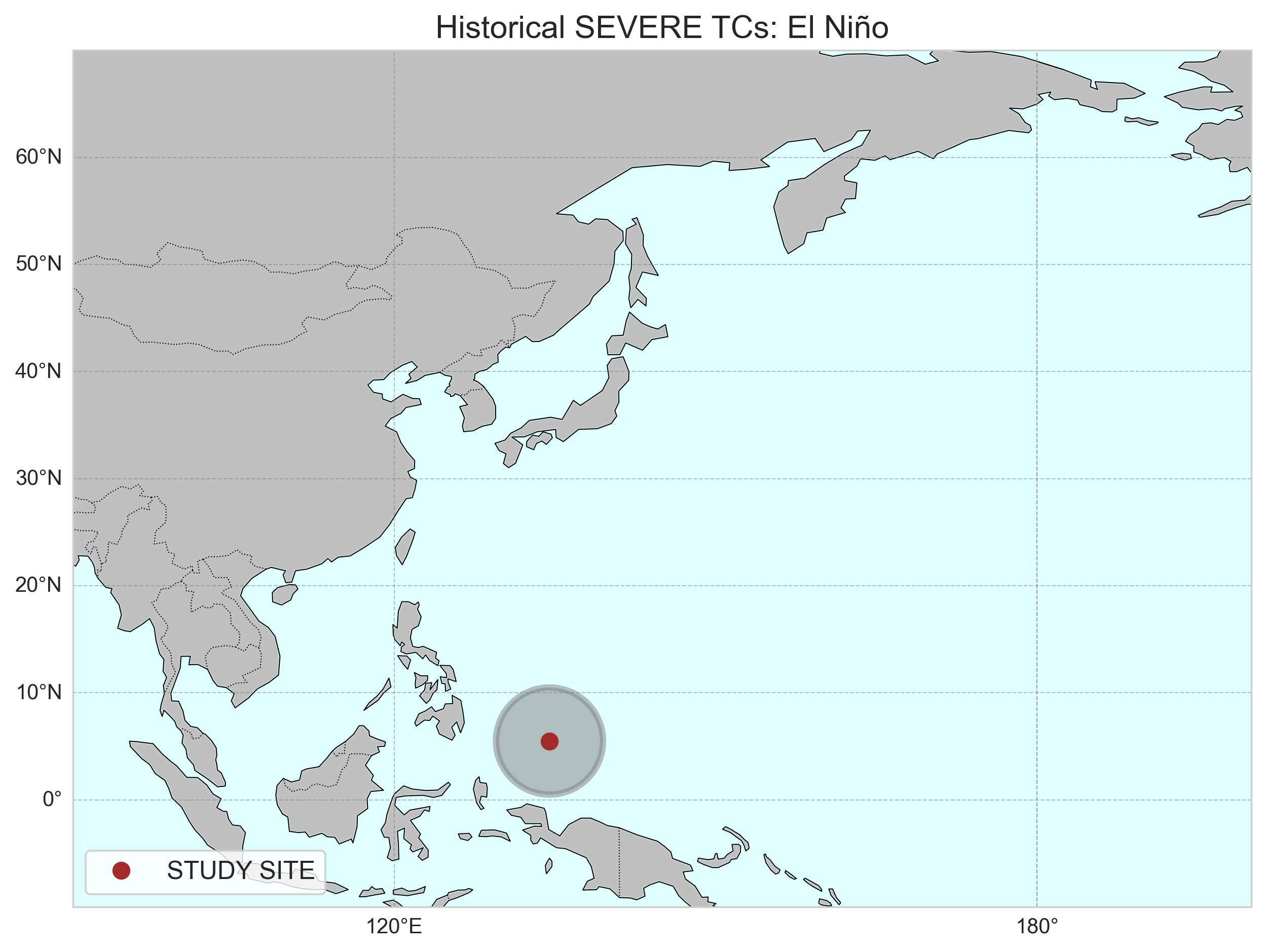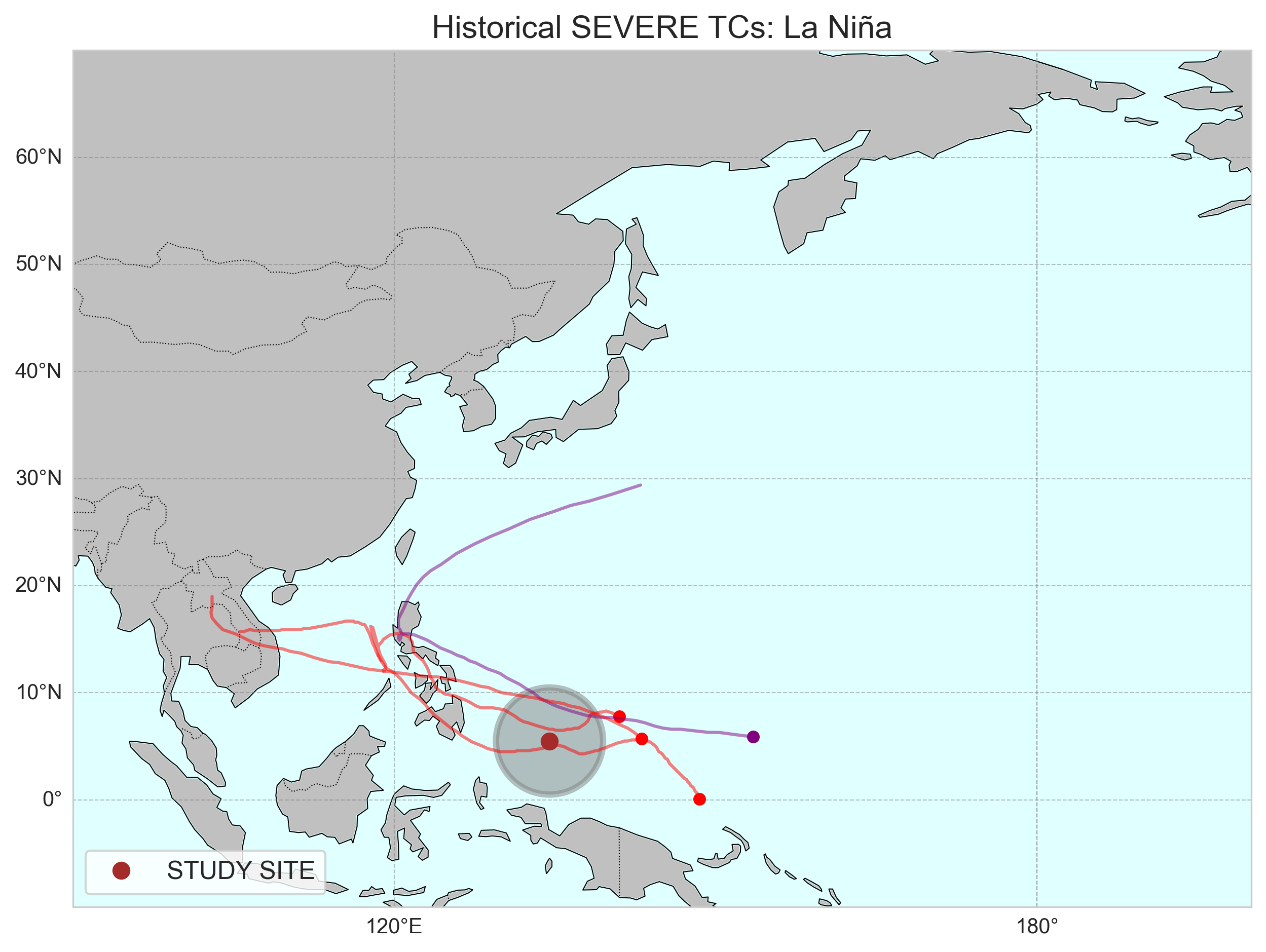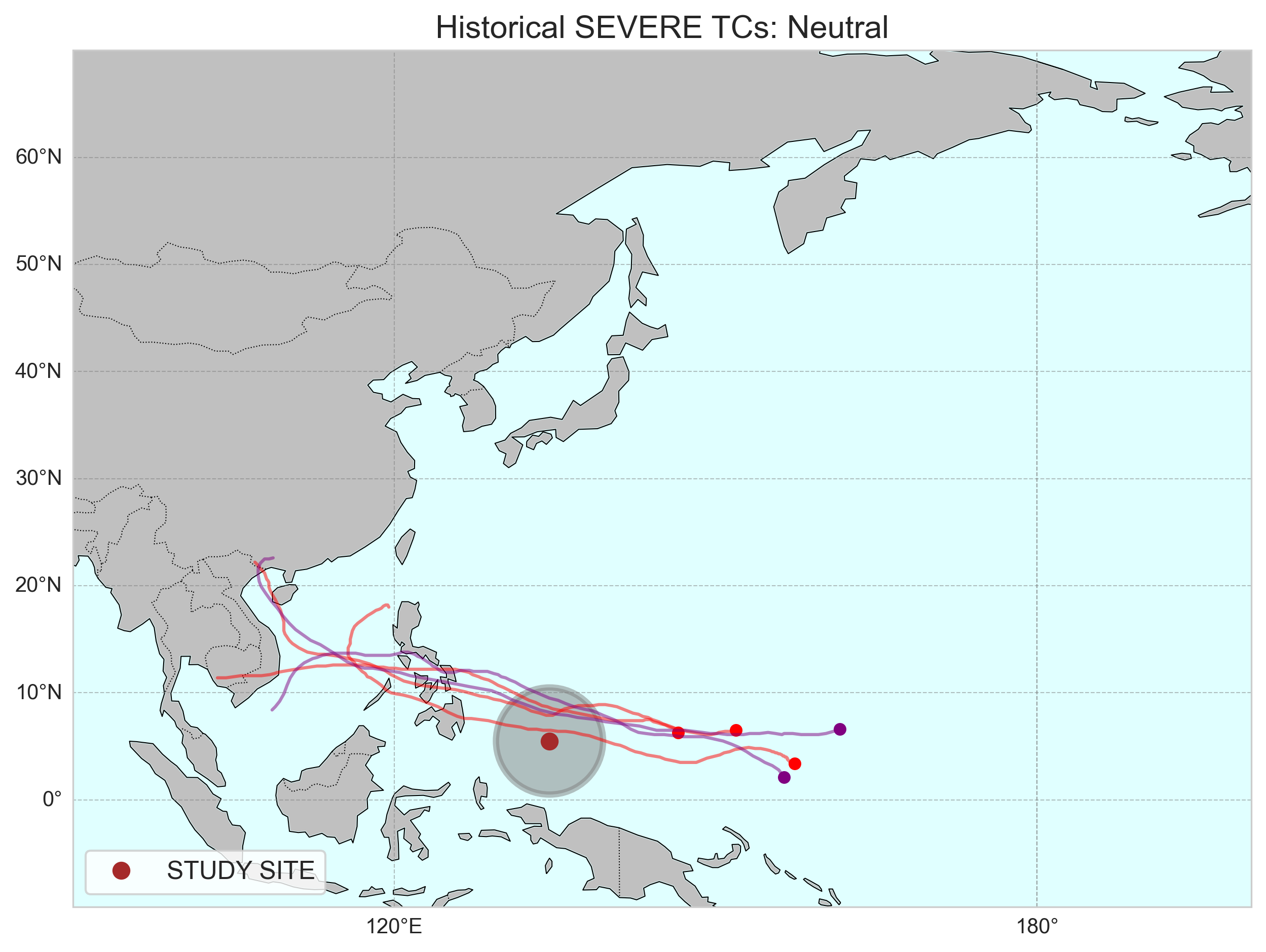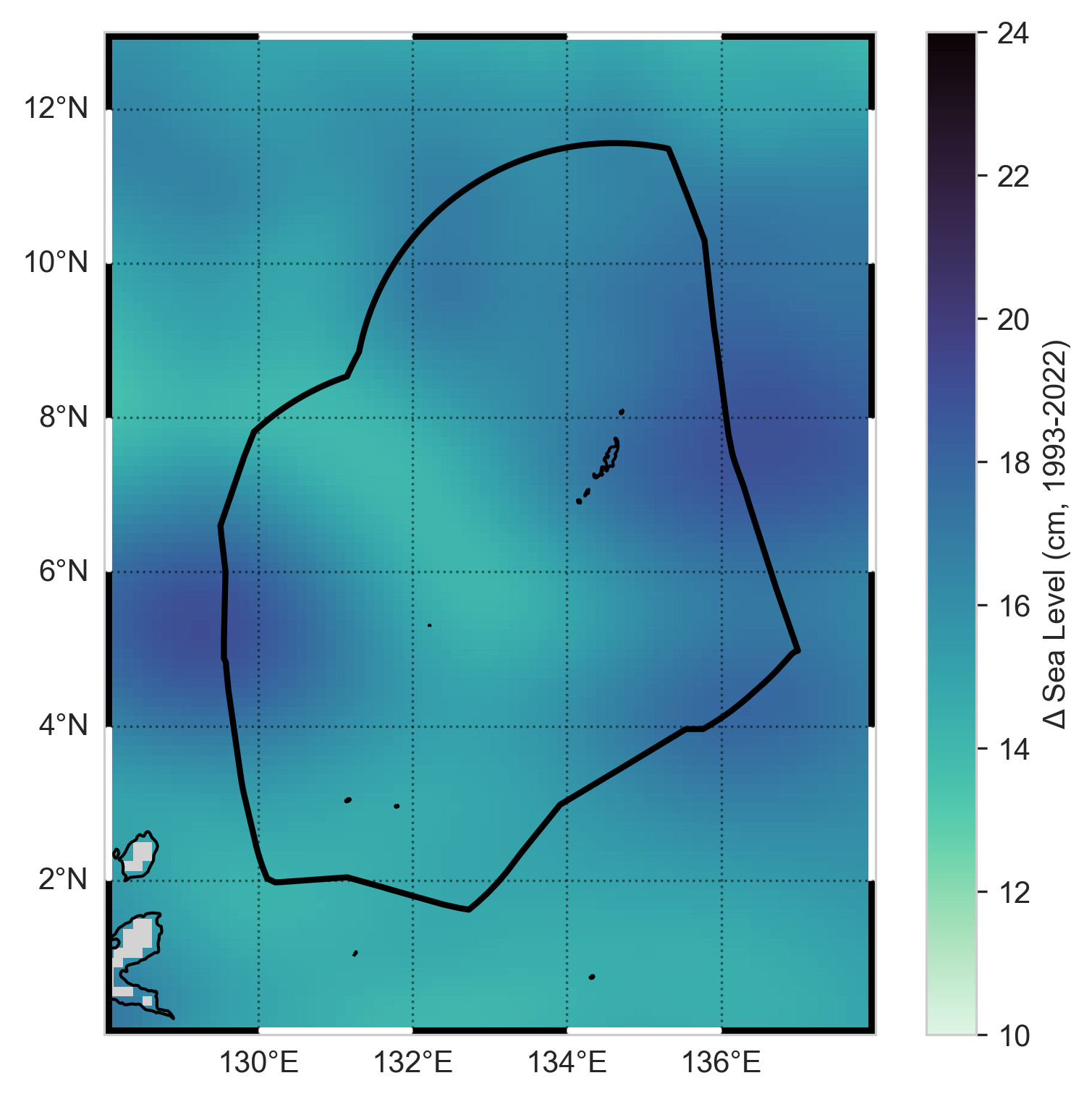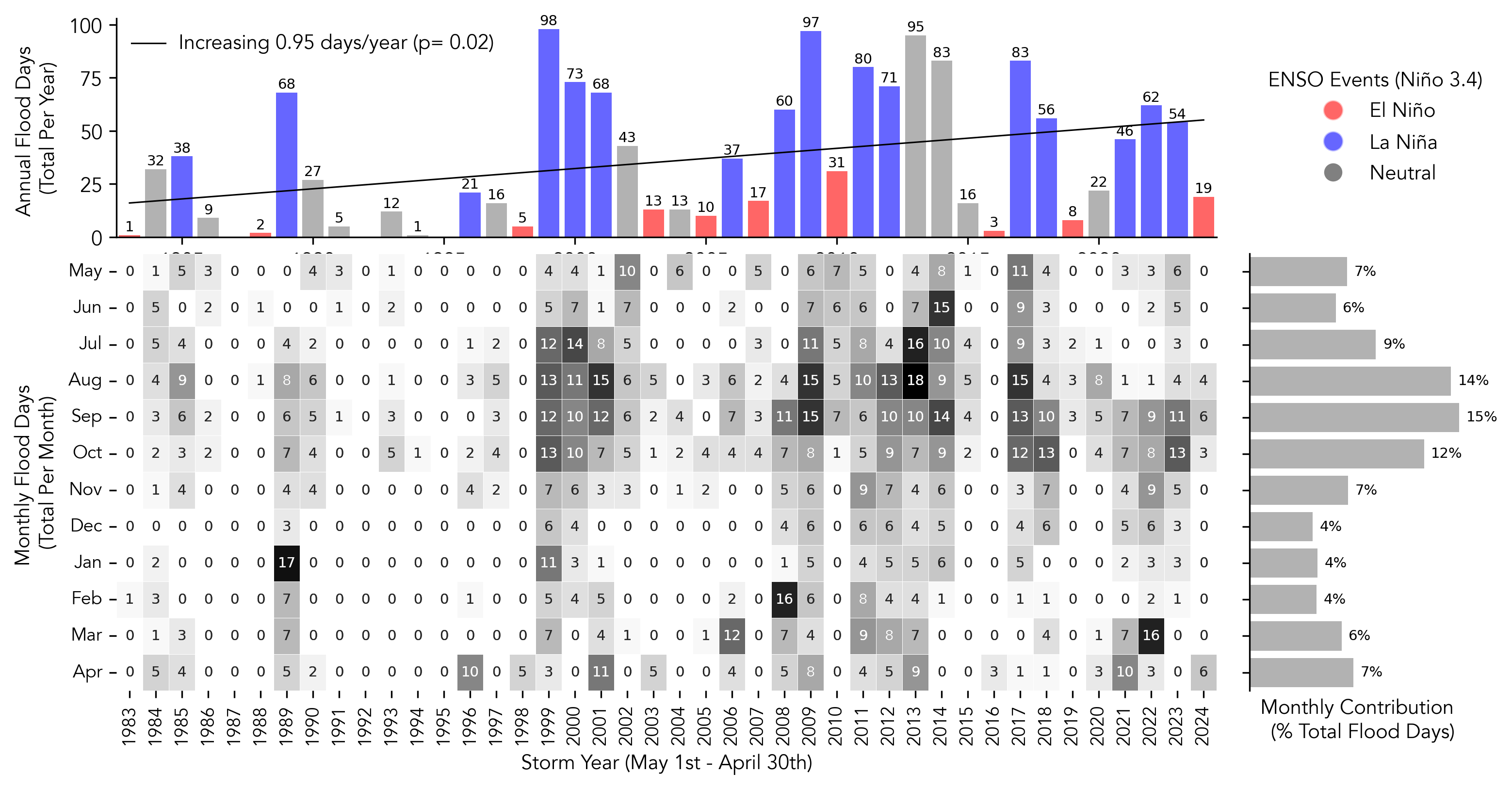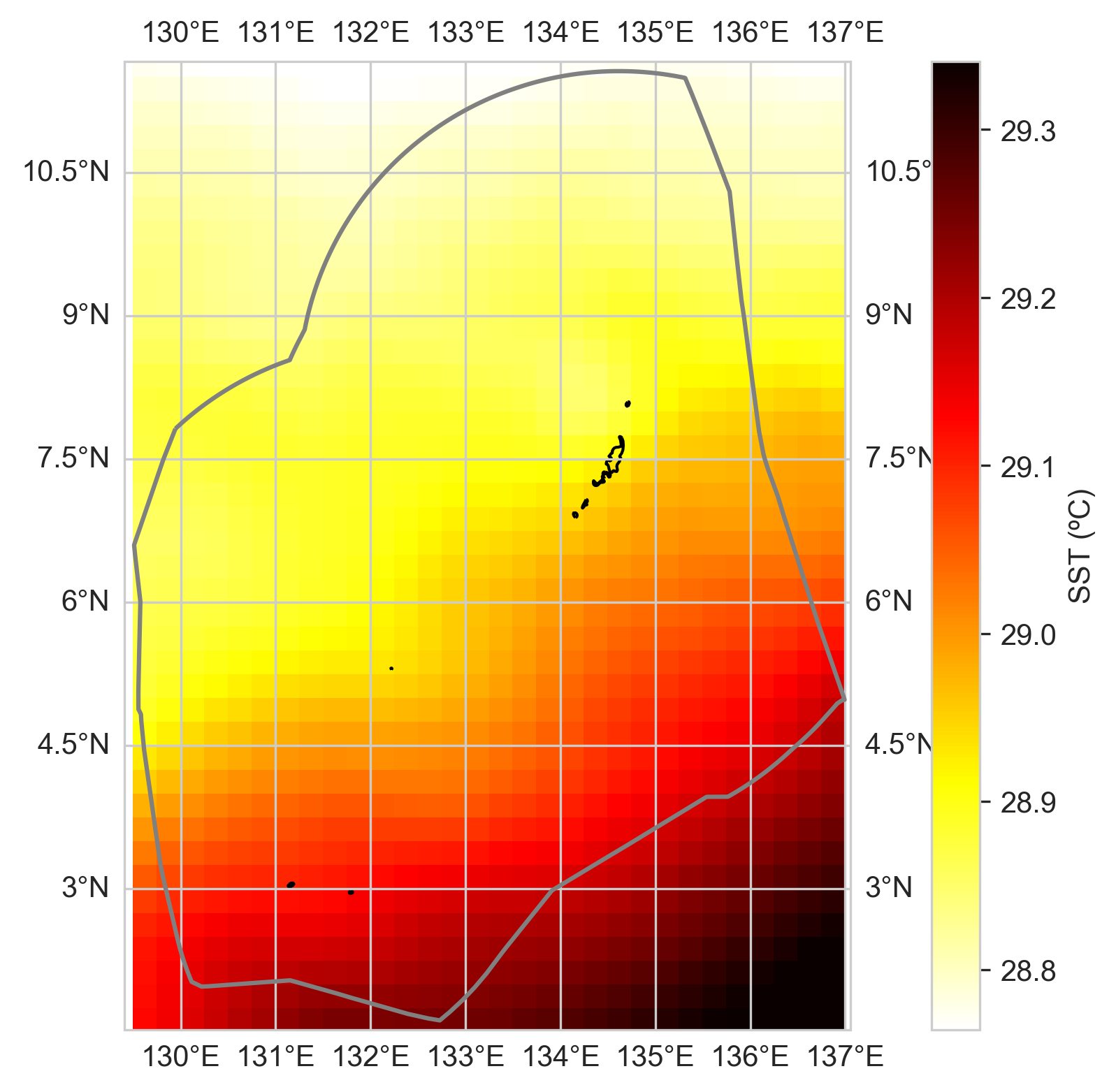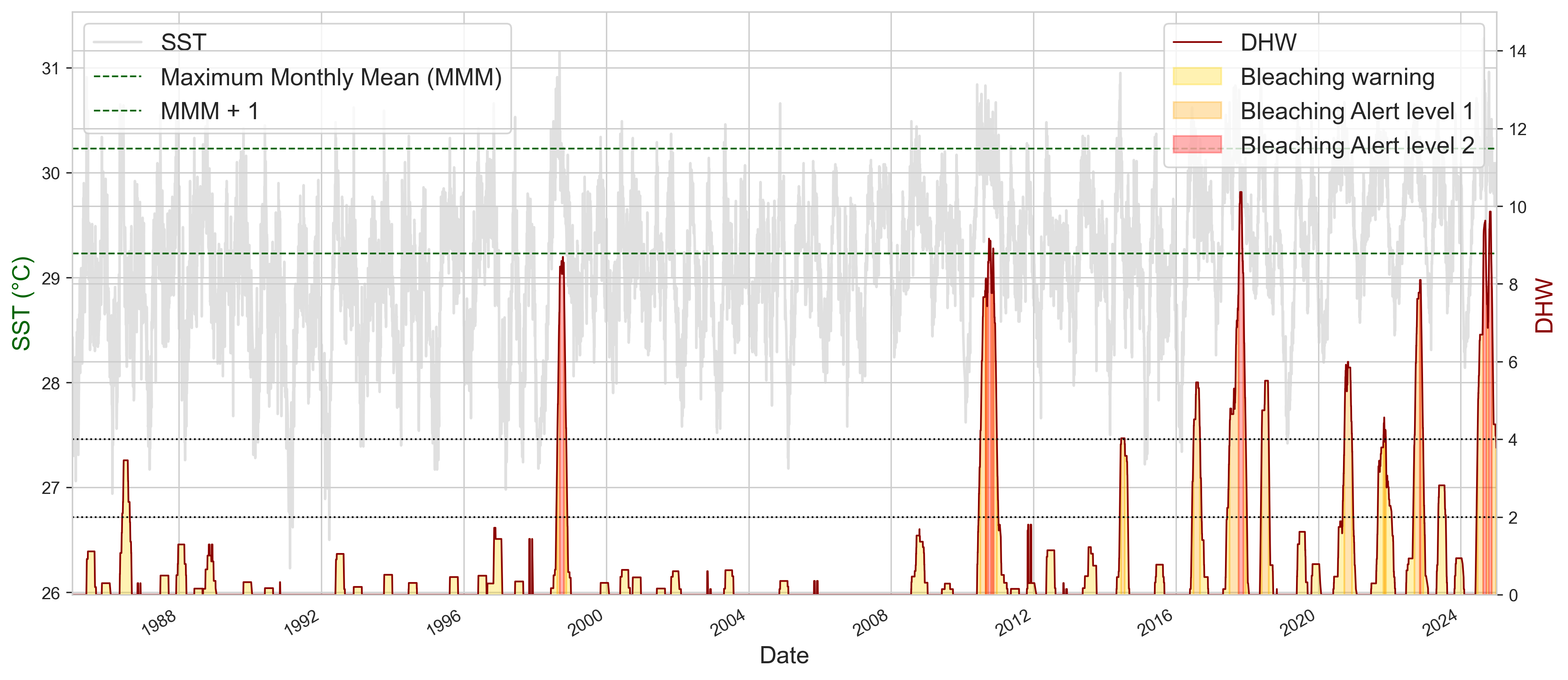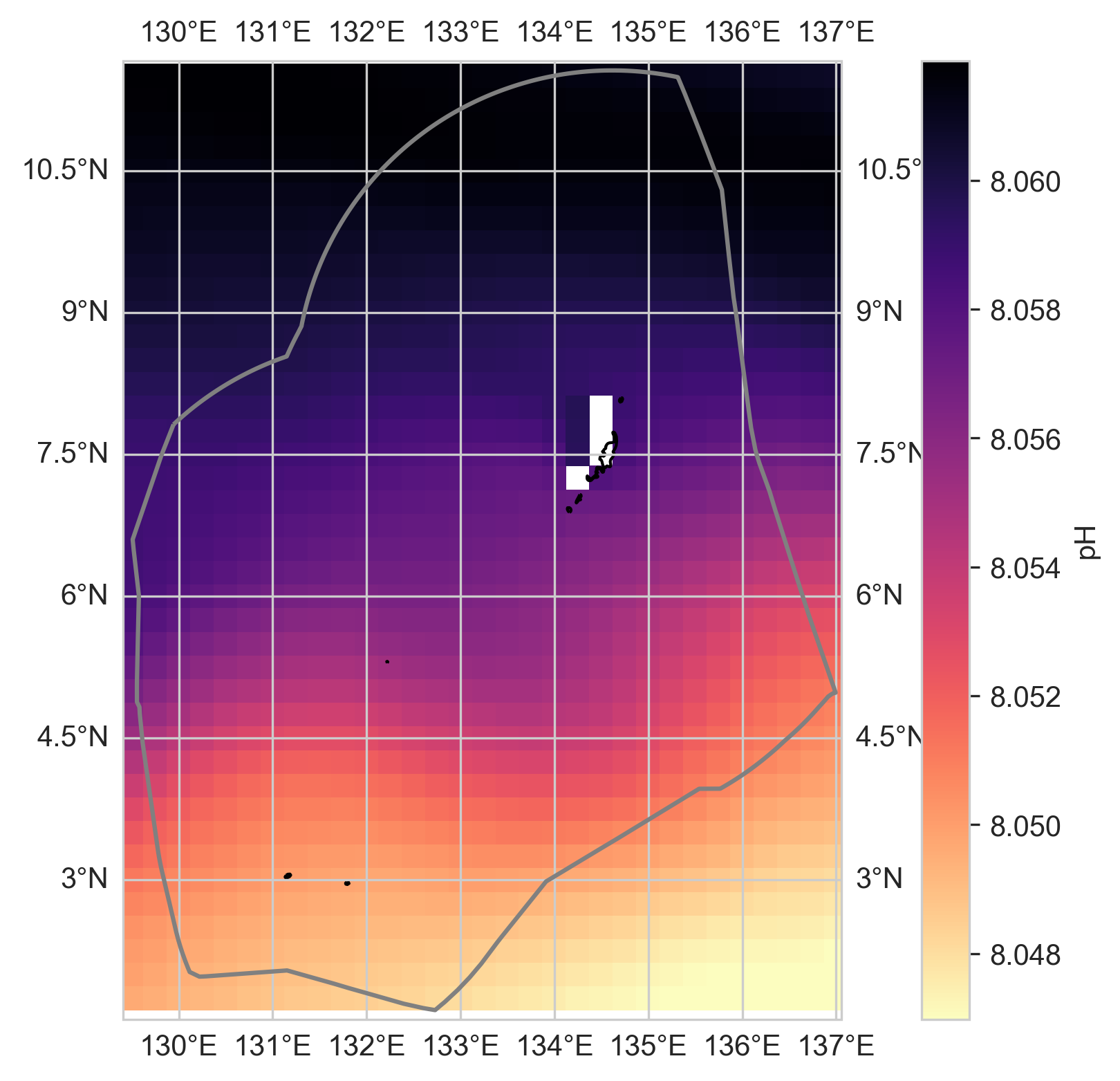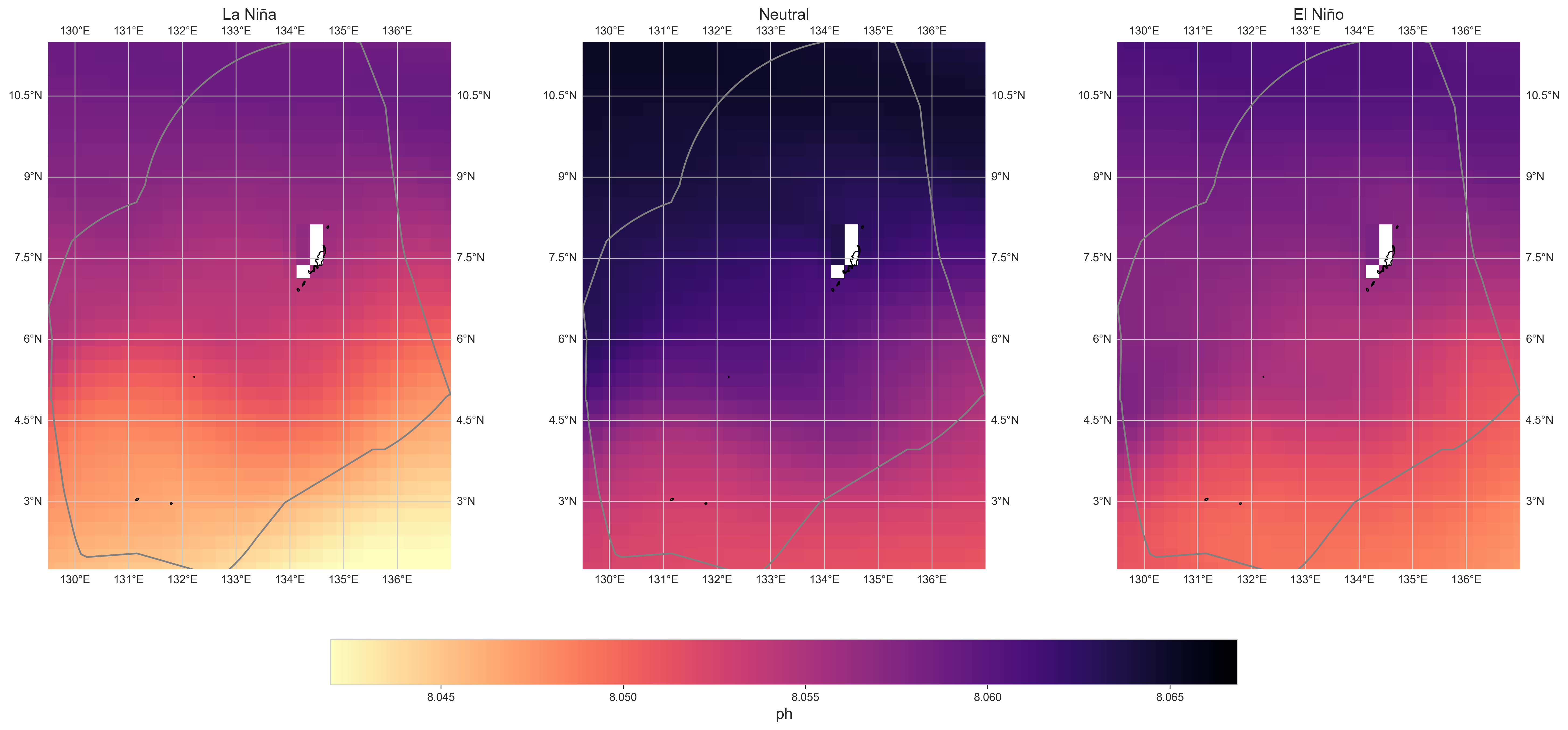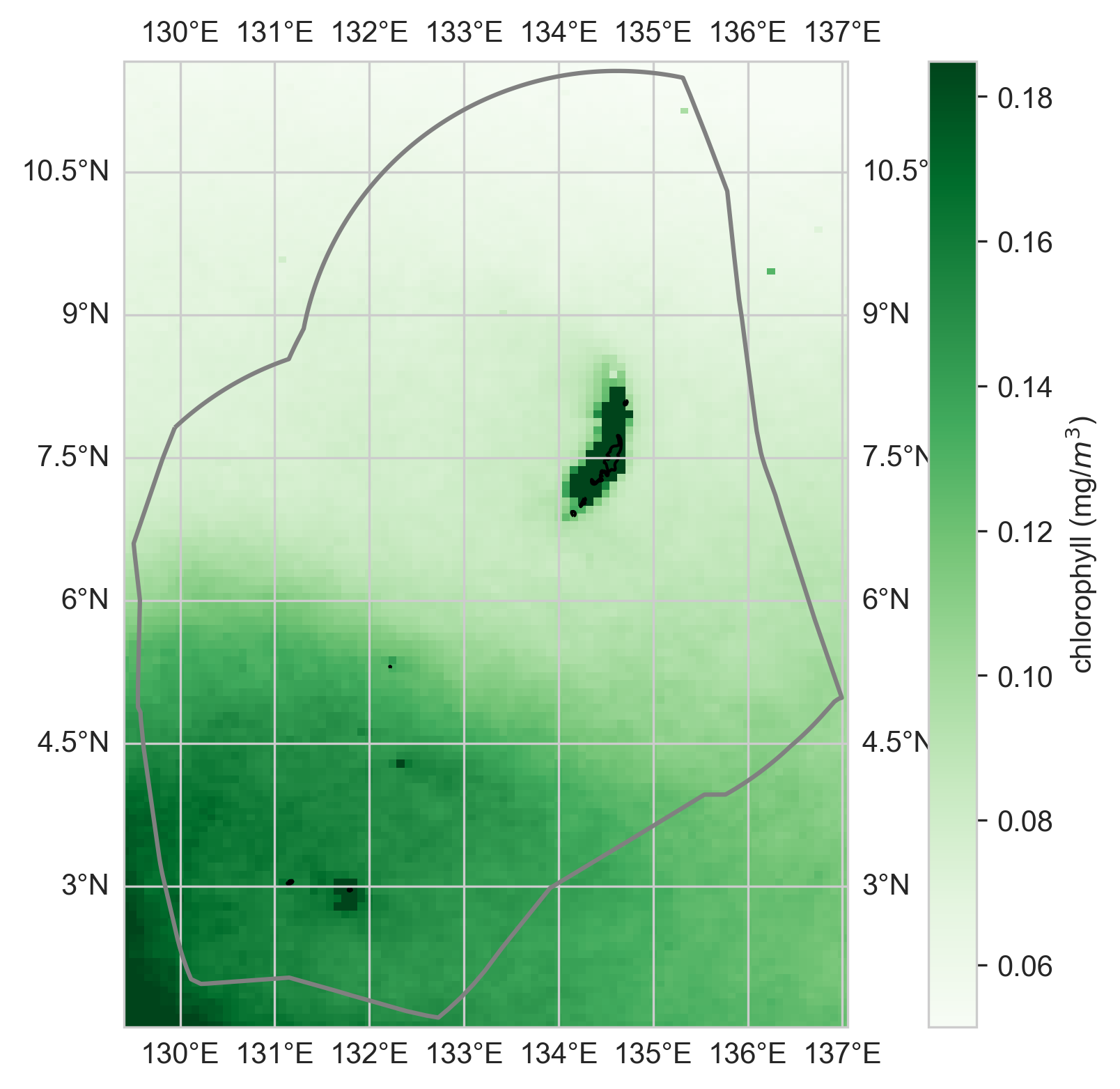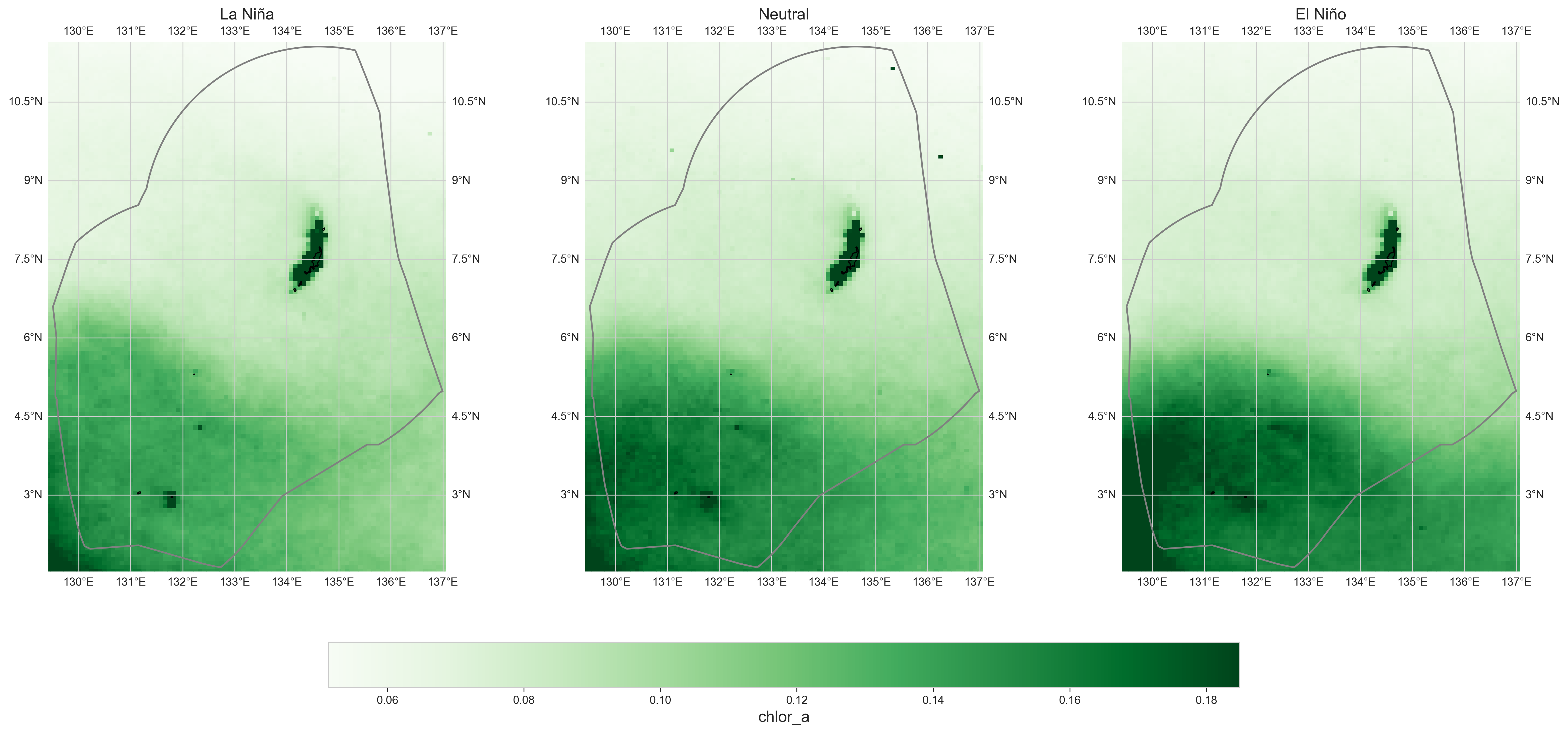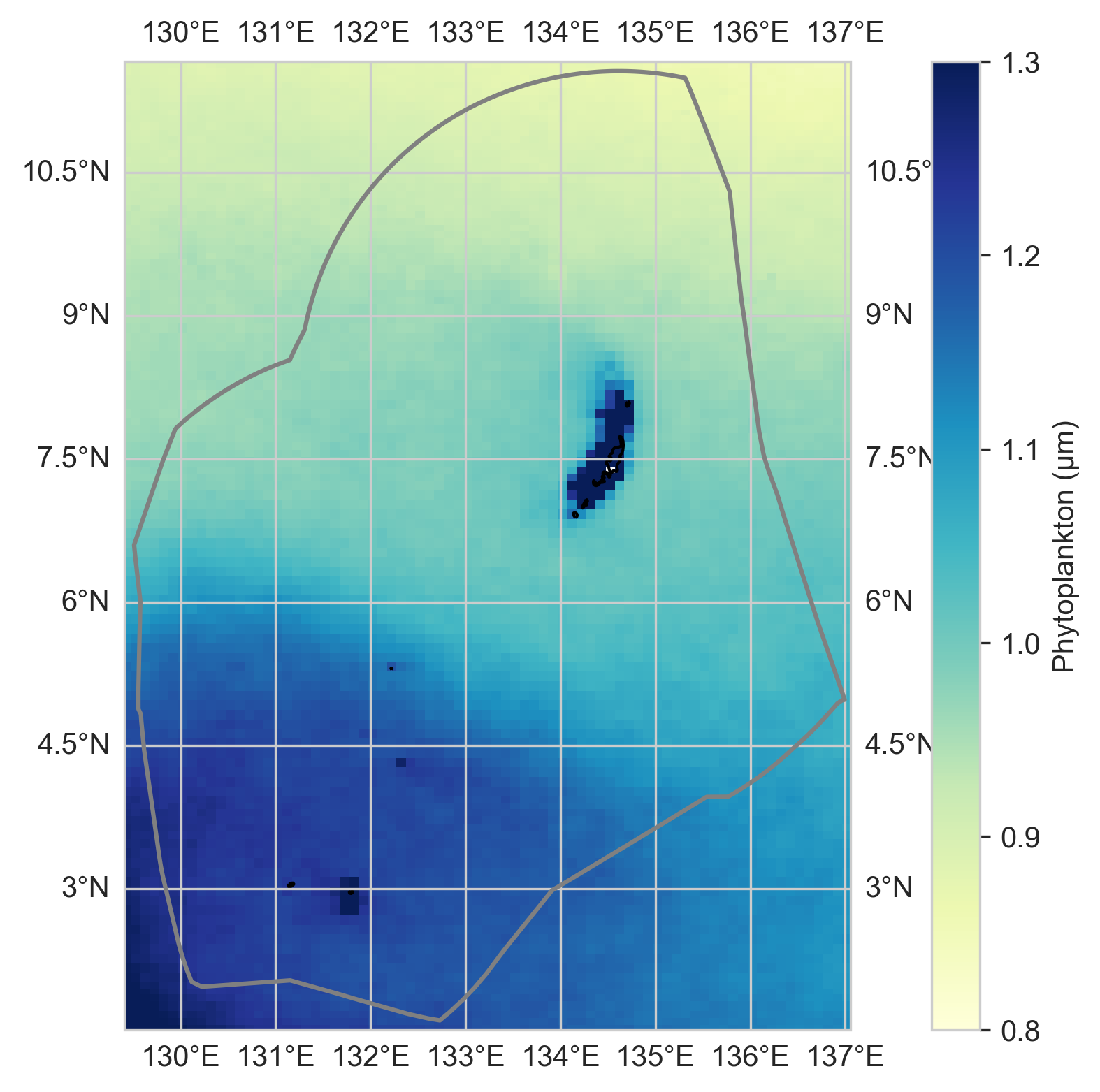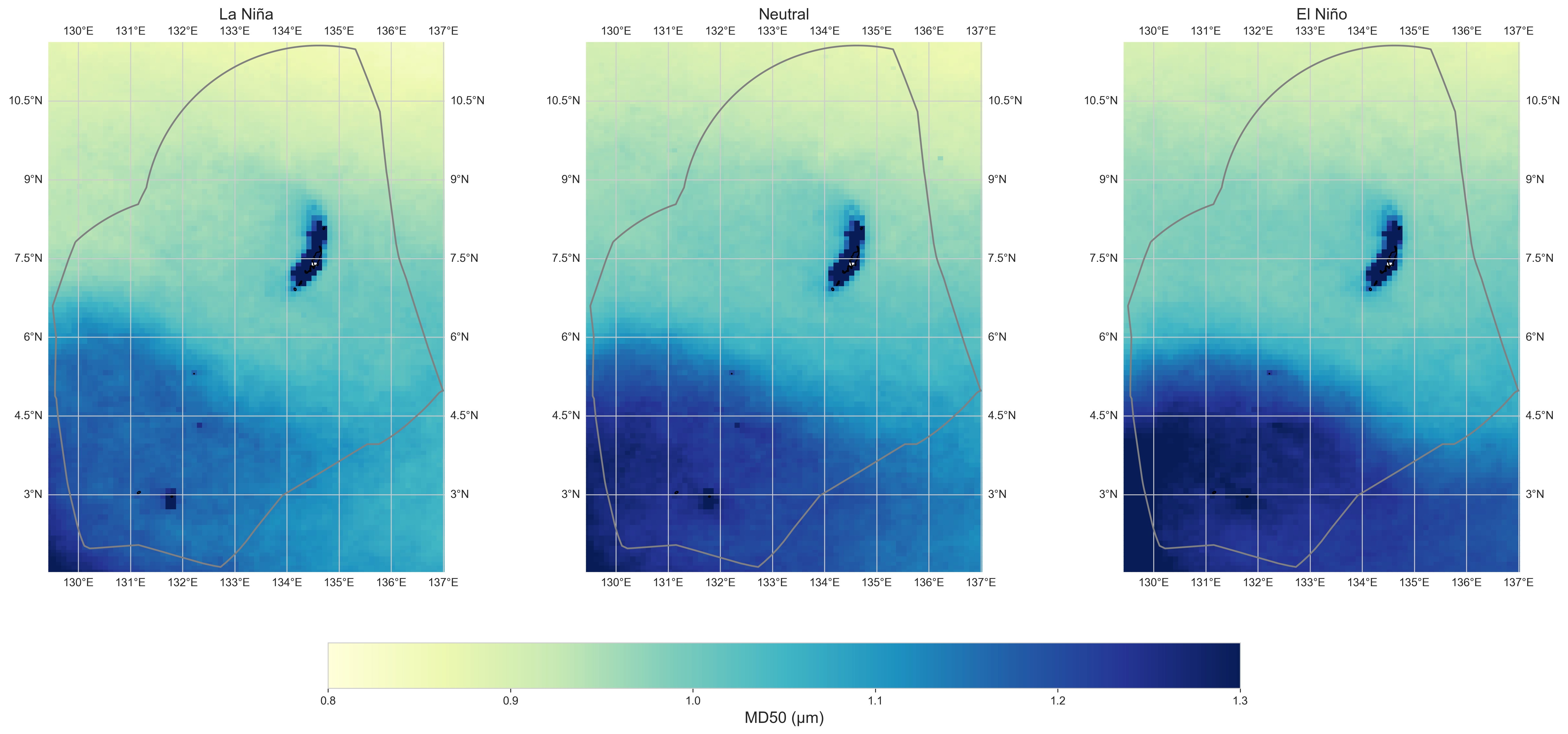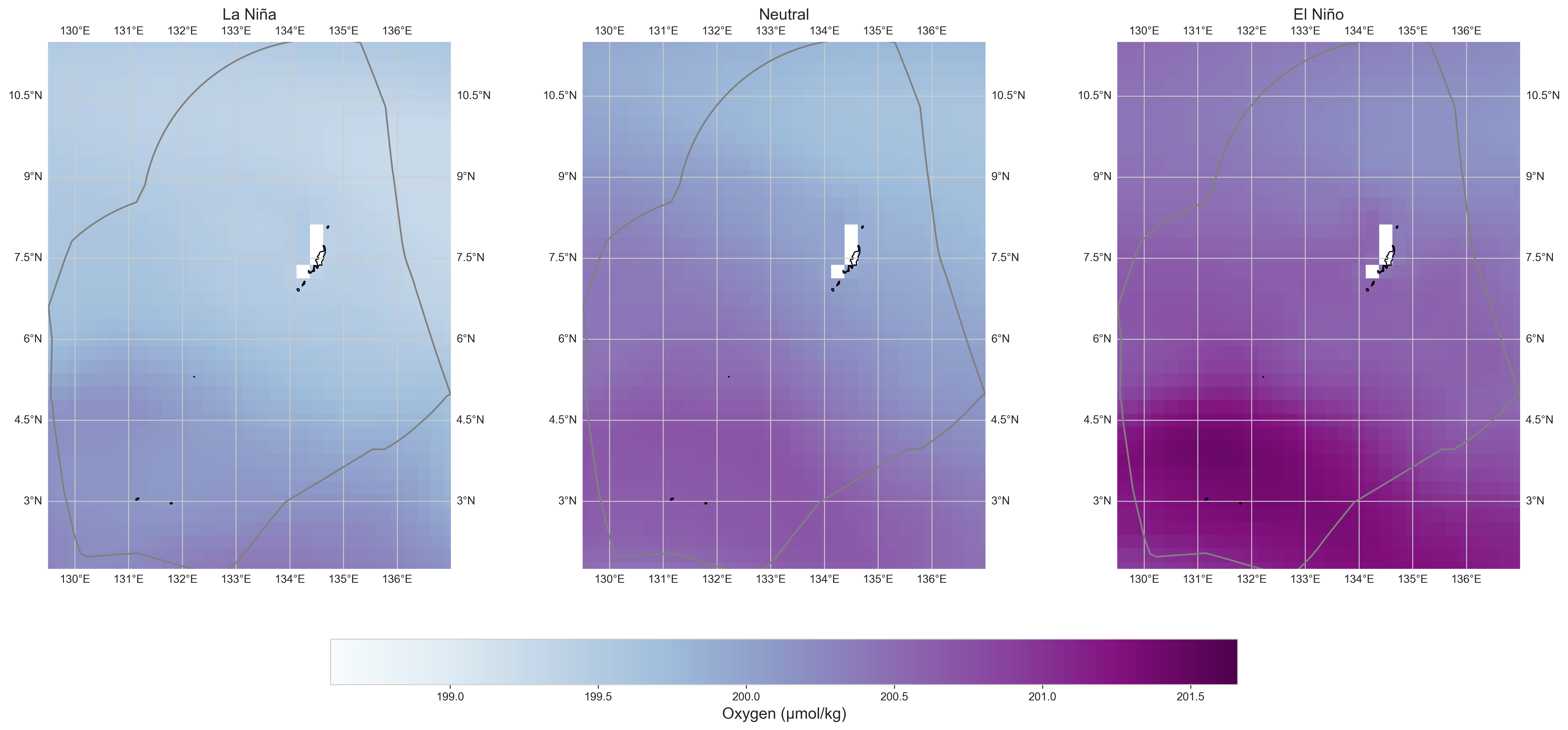CLIMATE INDICATORS FOR PALAU
These example product sets are generated through a series of jupyter notebooks. For more details, click on the linked notebooks in the indicator column.
| Variable | Indicator | Indicator Type | Historical | Projections |
|---|---|---|---|---|
| Atmosphere | 1. Atmospheric Concentration of CO2 | 1.1.1 Linear Trend |
Figure 1 Monthly Mean Concentration of Atmospheric CO2 at Mauna Loa since 1959.
The blue line represents the monthly mean values, centered in the middle of each month.
The red line represents the same, after correction for the average seasonal cycle.
The solid black line represents the trend, which is statistically significant (p < 0.05).
The annual oscillations at Mauna Loa are due to the seasonal imbalance between the photosynthesis
and respiration of plants on land. From NOAA ESRL Global Monitoring Division.
https://www.esrl.noaa.gov/gmd/ccgg/trends/
|

|
| 2. Surface Temperature | 1.1.1 Mean Surface Temperature Linear Trend |
Figure 2 Annual mean temperature anomalies relative to 1961–1990 climatology at Koror.
The solid black line represents the trend, which is statistically significant (p < 0.05).
Shading in the bar plots represent El Niño (red), La Niña (blue) and Neutral (grey) phases of ENSO
as defined by values of the Oceanic Niño Index (ONI).
|

|
1.1.1 Maximum and minimum temperature |
Figure 3 Annual maximum (red) and minimum (blue) temperature at Koror.
The solid black line represents the trend, which is statistically significant (p < 0.05).
The dashed black line represents a trend that is not statistically significant.
|

|
1.1.1 Amount of Hot Days and Cold Nights |
Figure 4 Annual percent of hot days and cold nights relative to 1961–1990
climatology at Koror. Hot days are defined as days above the 90th percentile for that
same calendar day (e.g., January 15th) from the 1960–1990 period, while cold nights
are defined as days below the 10th percentile for that same calendar day in the 1960–1990
period. The solid black lines represent statistically significant trends (p < 0.05).
|

|
| 3. Rainfall | 3.1 Total wet day rainfall |
Figure 5 Annual total rainfall anomalies relative to 1961–1990 climatology at Koror.
Units are mm/year. The dashed black line represents a trend that is not statistically significant.
Shading in the bar plots represent El Niño (red), La Niña (blue) and Neutral (grey) phases of ENSO
as defined by values of the Oceanic Niño Index (ONI). Note the high annual and decadal variability.
|

|
3.2. Dry Conditions |
Figure 3 Trends in annual dry days (top) and maximum number of consecutive days (bottom)
over the period 1951–2024 at Koror. Dry days are defined as days below 1mm (0.04 inches) threshold.
Consecutive dry days is a measure of the longest sequence of days in a year where rainfall is less
than 1 mm (0.04 inches).
|

|
3.3. Wet Conditions |
Figure 3 Trends in annual wet days (top) and days with heavy rainfall (bottom)
over the period 1951–2024 at Koror. Wet days are defined as days above 1mm (0.04 inches).
Heavy rainfall days are defined as days where rainfall is greater than 47mm (1.9 inches),
the 95th percentile.
|

|
| 4. Tropical Cyclones | 4.1 Total number of TCs |
Figure 8 Tropical cyclones (TCs) in the vicinity of Palau since 1950.
Map showing all TC tracks in the vicinity of Palau (top) and annual storm count (bottom).
Categorizes are colored following the Saffir Simpson scale for wind intensity (see text for details).
Grey represents TCs where no wind information is available. Trend is not statistically significant.
|

|
4.2. Severe Tropical Cyclones |
Figure 9 Severe Tropical cyclone (TC) activity in the vicinity of Palau since 1950,
Major cyclones with winds greater than or equal to 110 kt and major hurricanes with winds greater
than or equal to 96 kt (110 mph). The horizontal lines represent trends in Named Storms,
Cyclones and Major Cyclones.
Violent Typhoons… with winds greater than or equal to 105kt (110 mph).
In the western North Pacific, the term "super typhoon" is used for tropical cyclones
with sustained winds exceeding 130k (150 mph). The trend is not statistically significant.
|

|
4.3. ENSO Historical TCs |
Figure 3 Historical TCs during El Niño, La Niña, and Neutral years.
|

|
4.4. ENSO Historical Severe TCs |
Figure 3 Historical TCs during El Niño, La Niña, and Neutral years.
|

|
| Ocean | 1. Sea Level | 1.1.1 Linear Trend |
Figure 10 Figure 10. Sea Level Change from Satellite Altimetry.
This map shows the (absolute) change in mean sea level in the vicinity of
Palau from satellite altimetry since the beginning of the satellite record (1993-2022).
For comparison, the (relative) value for the tide gauge at Malakal is shown as a circle in
the center of the figure. The black line is the Palau EEZ.
Figure 11 Sea Level Trends at Malakal. This plot shows the change in mean sea level recorded
at the tide gauge at Malakal (blue) and from satellite altimetry in the vicinity of the station (red)
since the beginning of the satellite record (1993-2022). In both cases the trends are statistically
significant (p < 0.05).
|

|
| 1.1.1 Flooding |
Figure 12 Minor flood frequency from tide gauge at Malakal. The heatmap plot (bottom left)
shows the total number of minor flood days by month/per year for storm years 1983–2024.
The bar plot (top) shows the annual total of minor flood days for the year combined.
Bars colors indicate the occurrence of an ENSO event within that storm year
(red, El Niño; blue, La Niña). The black line shows a significant trend (p<0.05)
of annual flood days over 1983-2024. Flood days are defined as any day in which the water
level exceeds 30 cm above MHHW for at least one hour.
|
|
||
| 2. Sea Surface Temperature | 1.1.1 Mean Trends |
Figure 13 Sea Surface Temperature (SST) Change from satellite. The map (top)
shows the change in mean SST (°C per decade) in the vicinity of Palau over the period
1982–2020 from the NOAA OISSTv2 satellite. The grey line is the Palau EEZ. The line
plot shows the change in mean SST averaged over the area within the top plot.
Figure 13 Sea Surface Temperature (SST) Change from satellite. The map (top)
shows the change in mean SST (°C per decade) in the vicinity of Palau over the period
1982–2020 from the NOAA OISSTv2 satellite. The grey line is the Palau EEZ. The line
plot shows the change in mean SST averaged over the area within the top plot.
|

|
|
| 1.2 DHW |
Figure 14 Sea Surface Temperature (SST) from satellite and ENSO state.
The maps show the change in mean SST (°C per decade) in the vicinity of Palau over
the period 1982–2020 from the NOAA OISSTv2 satellite under different ENSO states
(i.e., La Niño, Neutral, El Niño). The grey line is the Palau EEZ.
|
|
||
| 1.3 ENSO |
Figure 14 Sea Surface Temperature (SST) from satellite and ENSO state.
The maps show the change in mean SST (°C per decade) in the vicinity of Palau over
the period 1982–2020 from the NOAA OISSTv2 satellite under different ENSO states
(i.e., La Niño, Neutral, El Niño). The grey line is the Palau EEZ.
|
|
||
| 3. pH | 3.1 Mean Trends |
Figure 14 pH
Figure 14 pH trends
|

|
|
| 1.3 ENSO |
Figure 14 Sea Surface Temperature (SST) from satellite and ENSO state.
The maps show the change in mean SST (°C per decade) in the vicinity of Palau over
the period 1982–2020 from the NOAA OISSTv2 satellite under different ENSO states
(i.e., La Niño, Neutral, El Niño). The grey line is the Palau EEZ.
|
|
||
| 4. Chlorophyll | 3.1 Mean Trends |
Figure 14 pH
Figure 14 pH trends
|

|
|
| 1.3 ENSO |
Figure 14 Chlorophyll ENSO state.
|
|
||
| 5. Phytoplankton | 3.1 Mean Trends |
Figure 14 pH
Figure 14 pH trends
|

|
|
| 1.3 ENSO |
Figure 14 Chlorophyll ENSO state.
|
|
||
| 6. O2 | 3.1 Mean Trends |
Figure 17 O2
Figure 17 O2 trends
|

|
|
| 1.3 ENSO |
Figure 14 O2 ENSO state.
|
|
